How to Build a House in Yucatan
Before we moved to Yucatan, we spent two years renovating a 70-year-old Spanish Revival home in central California. While the process was initially quite enjoyable, several unexpected problems resulted in a project that took twice as long to complete than originally planned. It also cost a considerable amount more than we had budgeted. In the end, we swore off another project and bought a fully renovated house in Merida’s Centro Historico for considerably less.
Oddly enough, it didn’t take long before we found ourselves engaged in the renovation of a smaller colonial house to use as an office. Perhaps we’re slow learners, or we just can’t accept defeat. Yet, contrary to our expectations, the project was completed quickly and on budget, despite the arrival of a major hurricane near the end of construction.
If you plan to renovate one of Merida’s lovely colonial homes, or to build a new home in the area, don’t be surprised if your experience is like either or neither of ours. No matter where you are in the world, building a house can be simple or complicated, easy or hard, a dream or a nightmare.
Having said all that, there are some things that you should consider if you are going to build or renovate in Yucatan. Many of our readers have asked our opinions on this subject, so we are offering them in this article. By no means is this meant to cover every possible situation, and we would hope that anyone who has something valuable to share will comment below.
1 - Buy Local
The most important thing we have learned is that if you are building in Yucatan, then choose a local architect and construction firm that has several years of experience in Yucatan. Select those who have a portfolio that matches your tastes and a list of satisfied references. There are many here speak English and their firms have at least one additional person on staff who speaks English as well. Several architectural firms over the years have developed their English-speaking skills in order to communicate better with English-speaking clients. The local architect school, FAUADY, graduates more architects every year and is a well-respected school in Mexico. There are no shortage of competent, honest and creative local architects.
Many foreigners who come to Yucatan learn the basics of renovation and remodeling. Depending on the scope of your project, they may offer a reasonable alternative to using a local firm. But remember that they do not have friends or family in the business, nor in government, and it is through this network of personal resources that the majority of Mexican business gets done.
Local architects and contractors are well connected and know the local markets and best practices. They will be able to advise you on construction and design techniques that work best in a tropical climate using materials that are most common to the area. They know the authorities in the government and the culturally accepted way to make things happen. In the long run, they will probably achieve the results you want at a better price.
2 - Get An Estimate
Ask for a design and presupuesto (estimate) from more than one firm. Most will include the price of this effort in the cost of renovation and/or construction. The ones who are not awarded the contract will charge a nominal fee, which depends on the scope of your project. This process will educate you on many levels and help you to choose the best design, engineering and construction options. It will also help you determine which firm is the best fit for your project and is the most responsive to your needs.
Always obtain a design and presupuesto BEFORE starting work. It may be impossible to have a design that is complete in every detail, but the closer it is to including all line items required to complete the project, the fewer unhappy surprises there will be later on.
Most firms we interviewed will charge as little as 10% and as much as 30% of your construction budget to design, administrate and supervise your project. The amount you pay is not always a case of “you get what you pay for,” so be sure to shop around.
3 - Follow The Rules
Follow the laws of Mexico. In the past, many construction projects in Mexico have been preformed by an informal labor force and paid abajo de agua (literally, under water, but it means 'under the table'). Many changes by federal and local governments makes this approach more risky than it used to be. Avoid using free-lance labor on large projects, and be sure that all workers are paid Social Security. Not paying Social Security (IMSS... pronounced "eemz") may save you a few pesos, but you are taking that money right out of the mouths of the families being supported by the (mostly) men working on your house. And if anyone gets hurt working on your project, IMSS has them covered medically so that it will not come out of your pocket. Those abañiles (workers) work hard for you... paying them Social Security on top of their daily wage is only fair.
4 - Get A Contract
Obtain a standard construction contract from your Mexican architect or Notaria (lawyer). At a minimum, it should limit your liability for budget overruns and may include incentives for completing the project to a schedule. The contract should also stipulate that all workers be paid Social Security by the contractor (not you). The contract must be signed by all parties and notarized to be enforceable. All of the firms listed below will enter into a standard construction contract.
5 - Do Your Accounting
If the intended use for your finished renovation or new construction is a rental property or other income-producing venture, you should contract with a lawyer and accountant to establish a Mexican corporation (SA de CV) or limited liability company (S de RL de CV). You will need to report your rental or other income and pay taxes, or risk penalties and fines from Hacienda, the Mexican IRS.
6 - Permitame
Always obtain all required permits before beginning work. Many colonial homes in Merida’s Centro are designated as "historic" and will require a permit and inspection by INAH (National Institute of Anthropology and History). If you fail to obtain the proper permits, your project can be suspended and you will have to pay fines to resume.
We used to provide a list of local architects and construction firms that we knew to be good. But the list of known and good architects and builders has grown, and now it feels as if any list is leaving someone out. Longer too is the shorter list of architects and builders with whom people have had bad experiences. We will leave the comments to this article so you can read about others' experiences and opinions. But recommending or not recommending someone has become fraught with peril and is no longer practical.
7 - Check References
Suffice it to say that you should ALWAYS check references before you go ahead with someone to design or build your house. There are plenty of good people here in Merida with references. You could also check with Profeco, the federal government organization that monitors consumer affairs. If a business person in Merida has had problems enough that someone has reported them to Profeco, you can find out. If you do not speak good Spanish, consider taking a Spanish-speaking friend with you to make the visit easier.
8 - Have Fun!
This might be the hardest thing to do sometimes. Building a house anywhere in the world is stressful and has been known to break up marriages. Try not to take out your frustrations on your architect, your builder, your workers or your partner. Look at this beautiful thing you have the privilege of creating and enjoy the process!!
Suerte!
Profeco
address: Calle 49 No. 479-A, x 54 y 56, Centro, 97000 Mérida, YUC, Mexico
phone: +52 800 468 4212
website: https://www.gob.mx/profeco




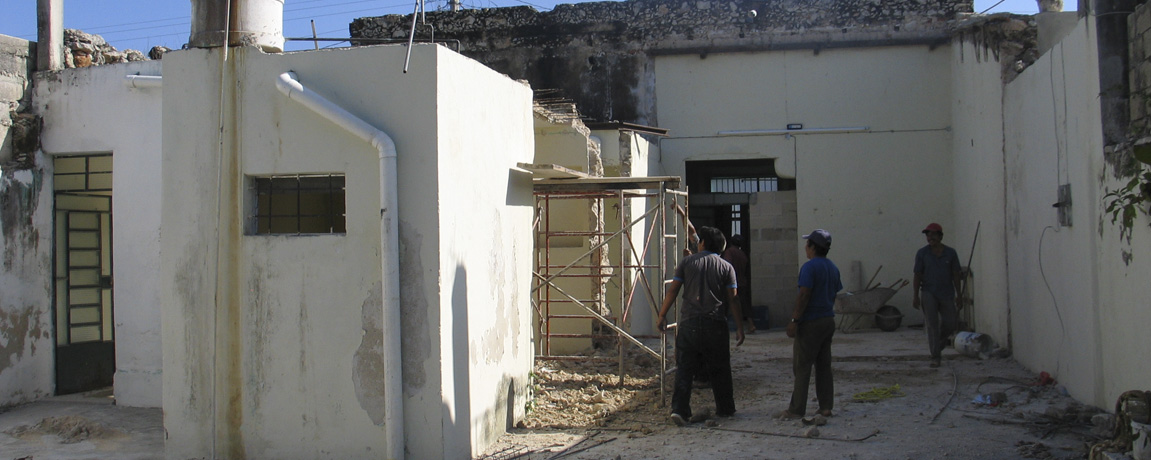


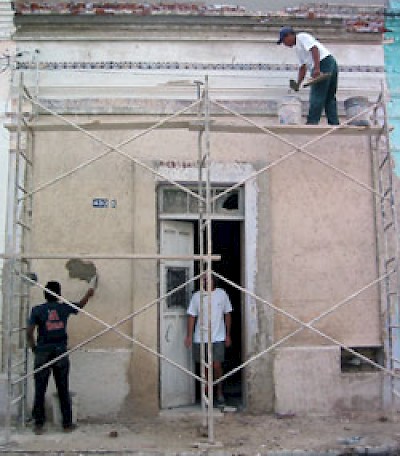
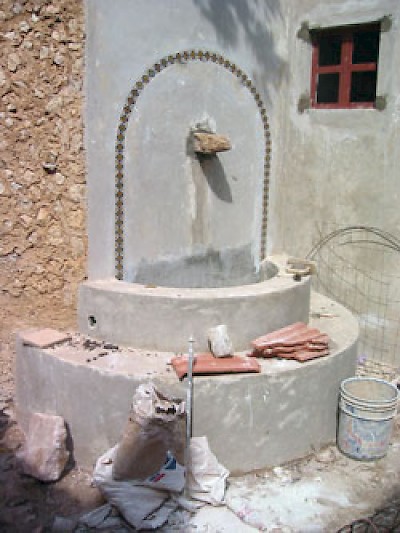
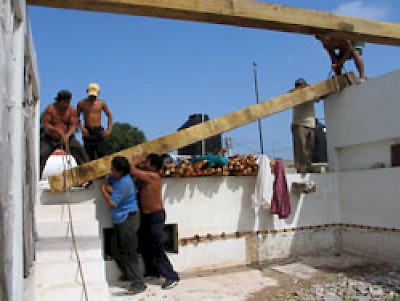
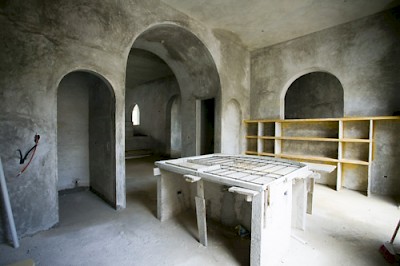
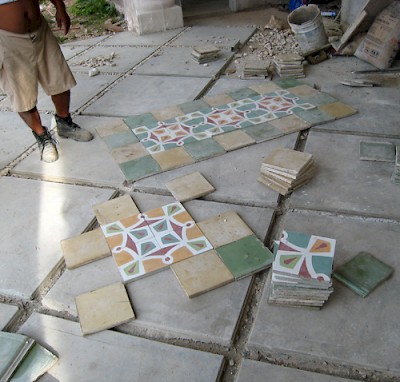
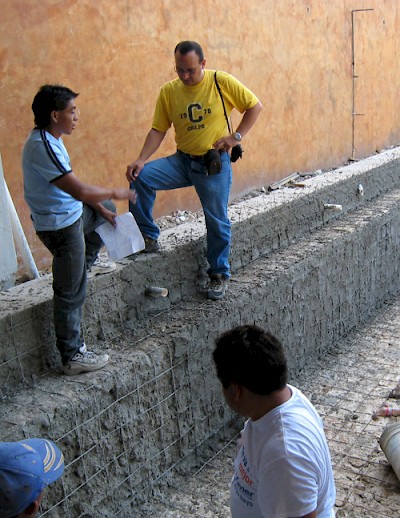
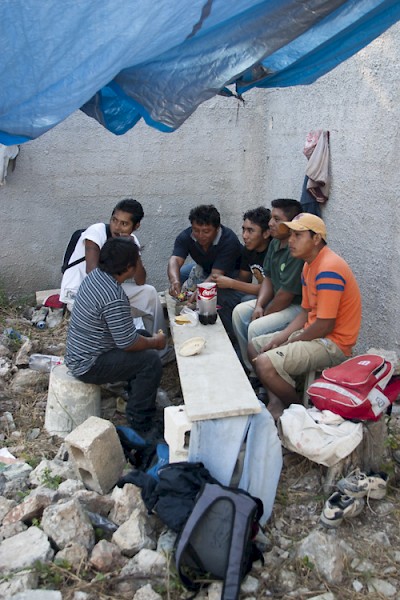

Comments
Working Gringos 18 years ago
Most of the architects listed here would probably consider a project in Sisal.
Reply
craig sotkovsky 18 years ago
i'm looking to build in sisal.. can anyone help me out with contacts?
thanks craig
Reply
Working Gringos 18 years ago
Thanks Paul,
Based on a three bedroom residential construction, most local architects we interviewed produce the design (as CAD drawings, including floor plans, elevations, electrical and plumbing), a detailed cost analysis, 2-3 computer generated 3D images, and obtain building permits for $3000 - $4000 USD. Your costs will vary, depending on just how BIG your ideas turn out to be... ;)
Reply
Paul Frost 18 years ago
This is a great web site! Very informative so first I would like to say thanks for doing this.
I am planning on building in Chelem. I have a limited budget and big ideas so I was planning to engage an Architect who could design the master plan and then build in stages as money permits. Your artical mentions that the architects that are not awarded the construction contract charge a nominal fee. My question is what is nominal and given I am only wanting a design at this point, what should I expect to pay for blueprints?
Thanks yall rock!
Reply
Working Gringos 18 years ago
Hola John,
We've researched this some more and have learned several things. In general, the Mexican Government holds the top employer responsible for payroll taxes. For example, if you own a business and have employees on payroll, then you will file their personal income taxes, not them. If you are building or renovating a house, then you are the top employer and responsible for paying the worker's social security. Of course, these duties are usually delegated, to an accountant in the first case and a contractor in the second.
Our accountant at DFK has assured us that there is a specific phrase you should include in your construction contract that will firmly fix any penalties on your contractor should he not fulfill the responsibilities you delegate to him in this regard.
Just like in the States, contractors game the system to reduce the amount of payroll taxes paid. They may list only half their crew on payroll or they may claim to pay them less than they do (the minimum wage is roughly $40 pesos a day, but most workers earn $100-$200).
Traditionally, your gringa ex-contractor is right. Only big construction firms paid and everyone else worked under the table. This is probably still mostly true, but thanks to the construction boom, some of these smaller contractors are bigger than they think.
Reply
John R. Thompson 18 years ago
I would also like to know who is responsible for paying social security. My gringa contractor did not pay it to her workers because (she informed me) "only big companies" pay it and she could not afford to pay it and continue to offer me such low rates. I find this particularly interesting in light of the fact that my current architects/contractors do pay social security while simultaneously offering me better work at a lower price.
Reply
Janice Crofts 18 years ago
So glad to see you did not add the name of ******* for construction. I had a horrible experience with him. But I have since found wonderful people to work with who are honest and live by a code of integrity.
(Editors note: We do not wish to disparage anyone on this website. But we also do not wish to consciously recommend anyone about whom we have heard multiple complaints. We pass this comment on to let all of you know that there are good people here to work with, and if you do your homework, you have a good chance of finding one of them!)
Reply
Working Gringos 18 years ago
We have been warned that even though a contractor pays his/her workers Seguro Social (Social Security), the owner of the house is ultimately liable for this responsibility. We are checking this with our lawyers and will report back as soon as we know more.
Reply
Steve 18 years ago
Again, an interesting and informative piece of writing. Thanks for all your fine work.
It bears noting once more that your list is really just the tip of the iceberg insofar as architects and contractors are concerned. While stories about unscrupulous, incompetent, and/or irresponsible building professionals are rampant in the expat community in Merida, there are some "gems" that really stand out. Of course, Victor Cruz and Henry Ponce are names that expats generally hear when they are embarking on a renovation/construction project. However, there are other very fine and honest architects who have not (at least yet) made it their primary business to serve the expat community. We are now working with a local architect on a renovation project, and we are delighted with the work that he is doing for us. (Alas, he does not speak English but this is not a problem for us.)
Thanks again for your great work.
Reply
Working Gringos 18 years ago
We have added notes about languages spoken to the list now. Thanks, Kevin!
Reply
Kevin 18 years ago
My Spanish is marginal (I'm constantly trying to improve my vocabulary) so I'm interested to know who (out of the list of referrals above) speaks some English in order to make this process bearable.
I will be renovating a small home (currently vacant but was used as a business) in Centro in 2007. I am returning to Merida in January 2007 and plan to meet with architect/contractors to see if my job is of interest to them. I purchased the property in May of 2006.
Thanks for any information you can provide.
Kevin
Reply
« Back (70 to 81 comments)Next »